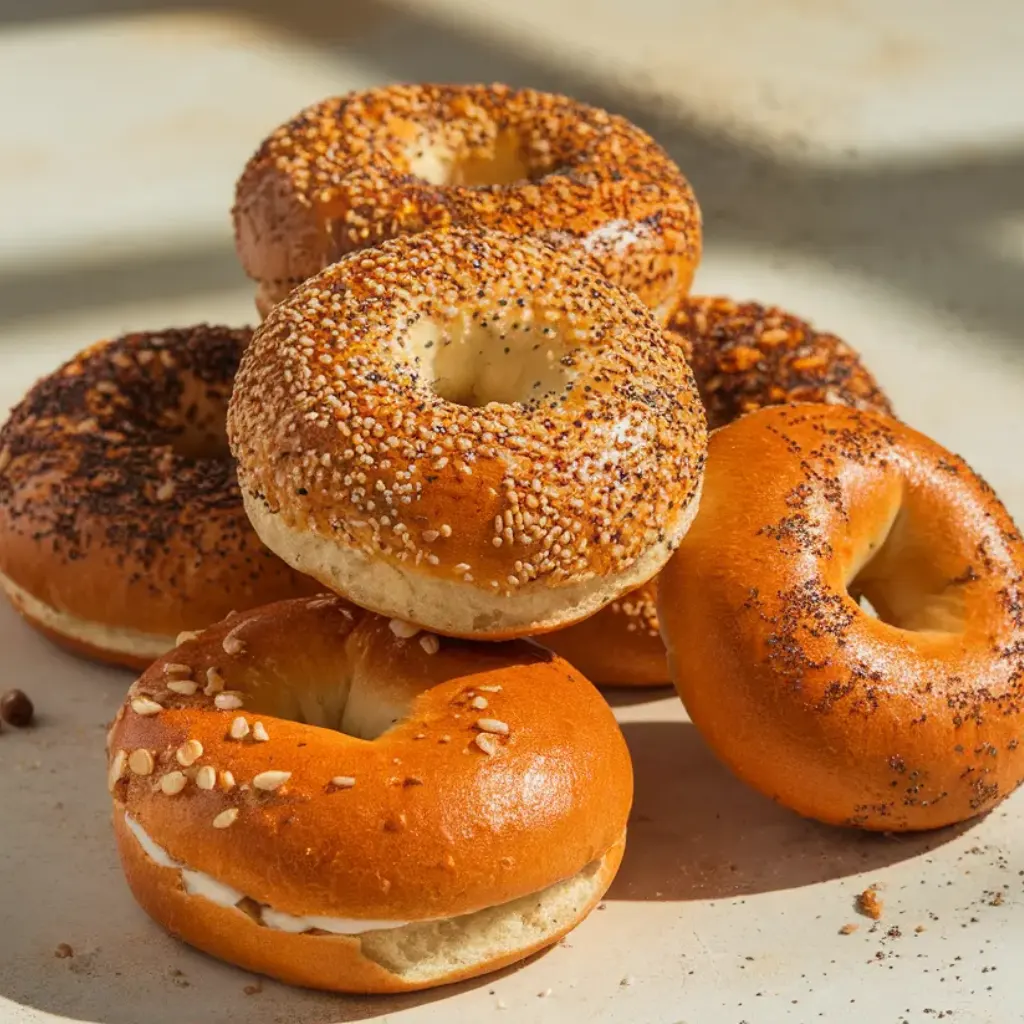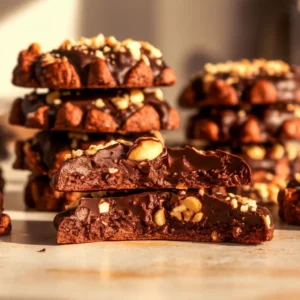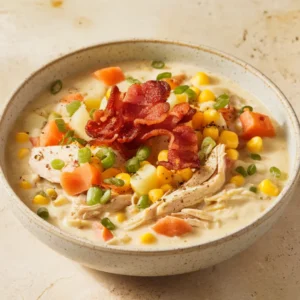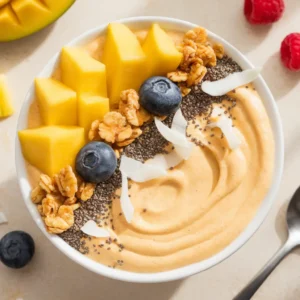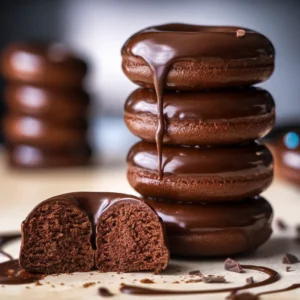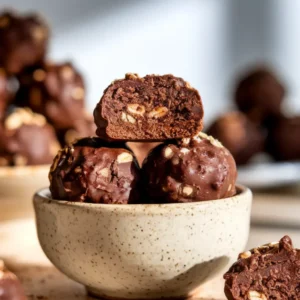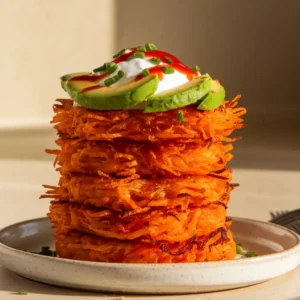Gluten free bagels don’t have to be dense, crumbly disappointments that fall apart at first bite. With the right technique and ingredient ratios, homemade versions can rival any bakery bagel, achieving that perfect chewy exterior and tender interior that makes breakfast worth waking up for.
This recipe solves the biggest challenge gluten-free bakers face: creating structure without wheat protein. The secret lies in combining multiple gluten-free flours, proper hydration, and a technique borrowed from traditional bagel makers. Whether you’re newly gluten-free or have been searching for years for a bagel that doesn’t taste like cardboard, this method delivers consistent, satisfying results.
*Before You Start: You’ll find more explanation here than a basic recipe. That’s intentional—the aim is to educate, not just instruct.
What Makes These Bagels Worth Your Time
❀ Authentically chewy texture: Say goodbye to crumbly, cake-like disappointments. These breads are soft on the inside with a satisfying chew, giving you that homemade bakery feel every time.
❀ Simple pantry ingredients: Made with common gluten-free flours you probably already have at home, so no last-minute grocery trips or complicated specialty ingredients needed.
❀ Freezer-friendly: Make a batch ahead of time and freeze for later. Toast straight from frozen for a quick breakfast or snack that tastes freshly baked.
❀ Customizable flavors: Add your own twist by tossing in seeds, herbs, or dried fruits. These breads are a versatile canvas for whatever flavor profile you love.
❀ Beginner-proof technique: Step-by-step guidance removes the guesswork, making it easy for even first-time gluten-free bakers to succeed.
❀ Ready in 2 hours: Including rise time, this recipe is faster than most bread recipes. Enjoy fresh, homemade gluten-free bread without spending all day in the kitchen.
Gather These Before You Start Mixing
For the Bagels:
• 2 cups brown rice flour: provides structure and mild flavor
• 1 cup tapioca starch: adds chewiness and helps bind ingredients
• ½ cup potato starch: creates tender interior texture
• 2 tablespoons psyllium husk powder: essential for elasticity and rise
• 1 tablespoon active dry yeast: use fresh yeast for best results
• 1 tablespoon sugar: feeds the yeast and adds subtle sweetness
• 2 teaspoons salt: enhances flavor and strengthens dough structure
• 1¼ cups warm water: temperature should feel like a warm bath (110°F)
• 2 tablespoons olive oil: keeps bagels tender and adds richness
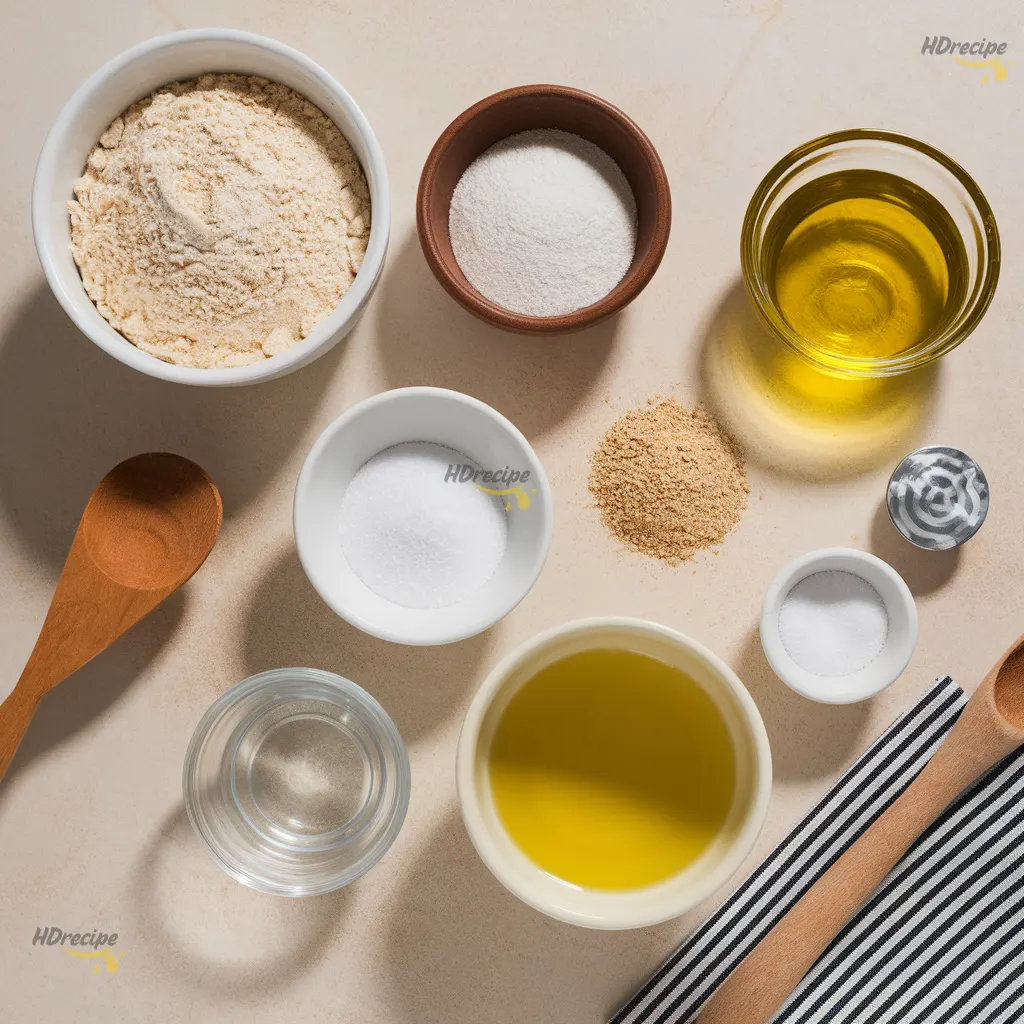
For Boiling:
• 8 cups water
• 2 tablespoons honey or maple syrup: creates glossy, golden crust
Optional Toppings:
• Sesame seeds, poppy seeds, everything bagel seasoning, coarse salt
Quick Notes: Brown rice flour works best here, white rice flour can make bagels gummy. Find psyllium husk powder at health food stores or online; whole psyllium husks won’t work the same way. If your water is too hot, it will kill the yeast, so test with your wrist.
From Flour to Fresh Bagels: The Process Unpacked
⤷ Activate the yeast.
In a large mixing bowl, combine warm water, sugar, and yeast. Stir gently and let sit for 5-8 minutes until foamy and bubbling. If mixture doesn’t foam, your yeast is dead or water was too hot—start over with fresh yeast.
⤷ Mix dry ingredients.
In a separate bowl, whisk together brown rice flour, tapioca starch, potato starch, psyllium husk powder, and salt. This prevents clumping and ensures even distribution of the binding agent.
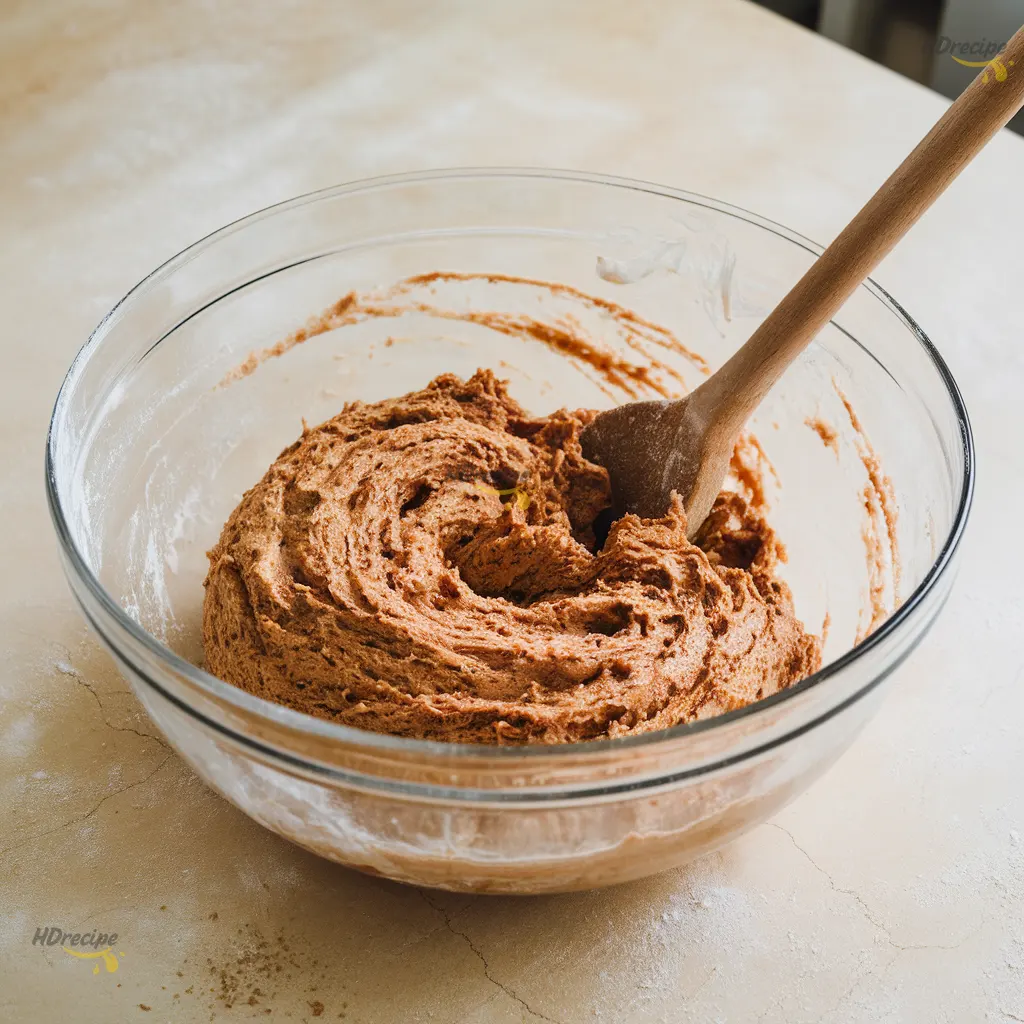
⤷ Form the dough.
Add the flour mixture and olive oil to the activated yeast mixture. Stir with a wooden spoon until a sticky dough forms. Don’t worry if it feels more like thick cookie dough than traditional bread dough, this is completely normal for gluten-free baking. The texture might feel unusual at first, but it’s exactly what gives the bread its chewy, tender crumb.
⤷ First rise.
Cover the bowl with a damp towel and let the dough rise in a warm, draft-free spot for 45 to 60 minutes, or until it has roughly doubled in size. You’ll know it’s ready when the dough looks puffy and jiggles slightly when you gently shake the bowl. This step is key for developing flavor and texture, so be patient, it’s worth the wait.
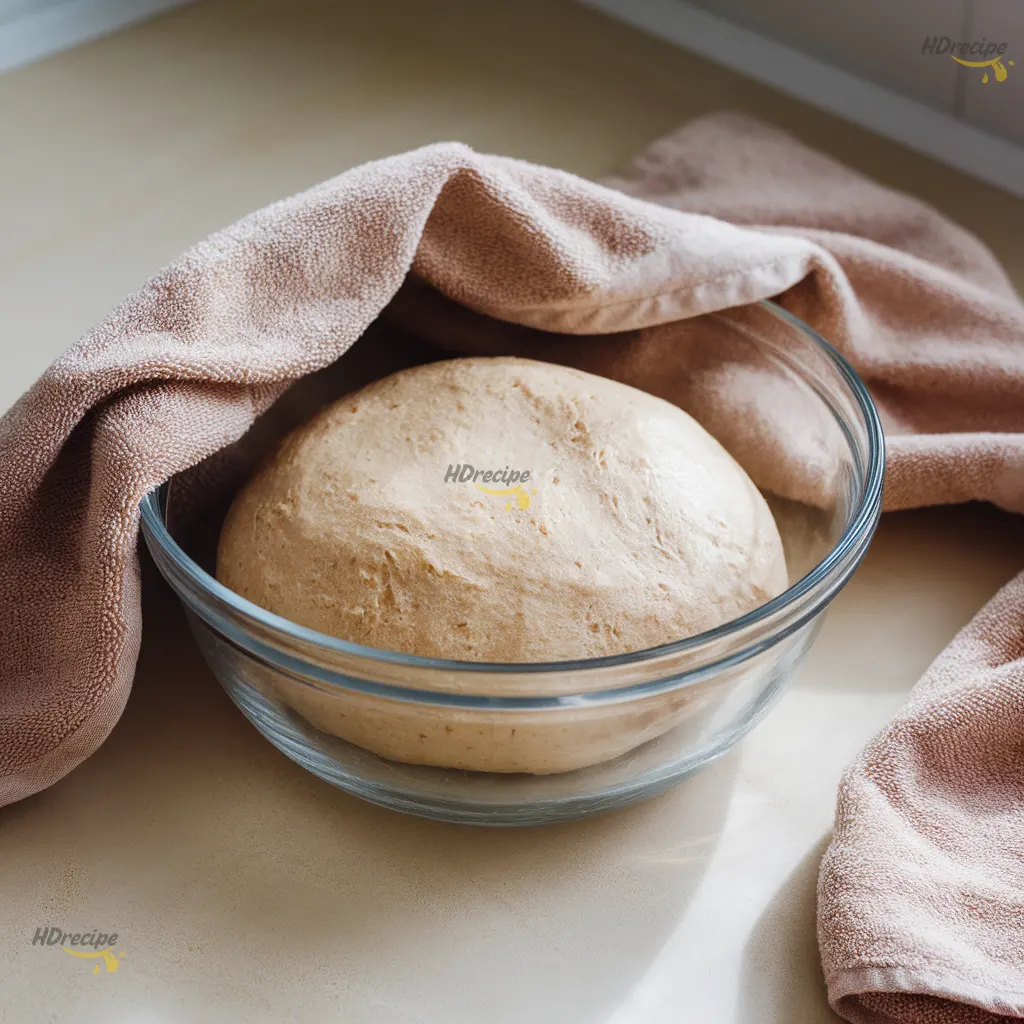
⤷ Shape the bagels.
Divide dough into 8 equal portions using a kitchen scale for best results (about 3.5 oz each). Roll each portion into a rope about 8 inches long, then connect ends firmly to form bagel shape. Place on parchment-lined baking sheets, cover with damp towel, and rise for 30 minutes.
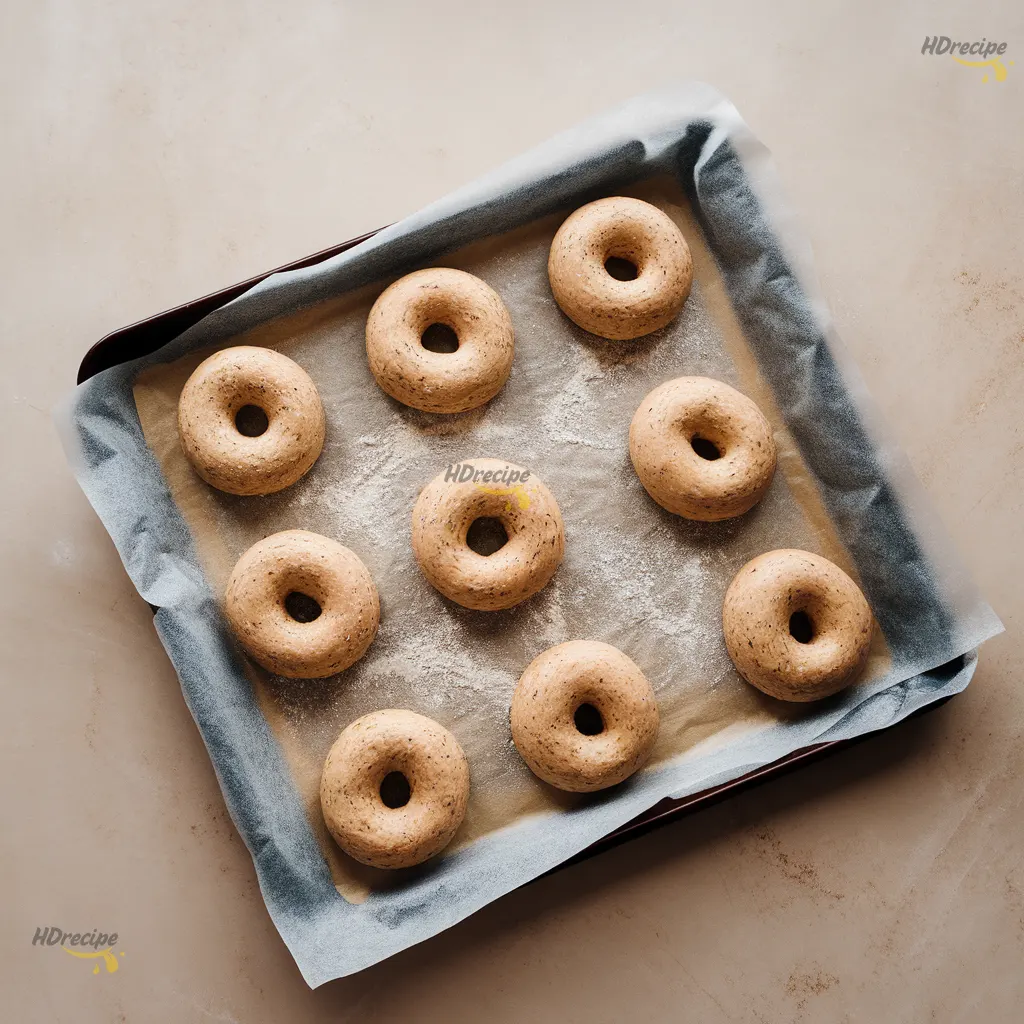
⤷ Prepare for boiling.
Bring 8 cups of water and the honey to a rolling boil in a large pot. Preheat your oven to 425°F while you wait. The honey isn’t just for sweetness, it helps create that signature glossy, golden crust that makes bakery bagels so irresistible.
⤷ Boil the bagels.
Carefully lower 2 to 3 bagels into the boiling water at a time. Boil each side for 90 seconds, flipping gently with a slotted spoon. This step is essential, it sets the exterior of the bagels, giving them that perfectly chewy texture you expect from a classic bagel. Don’t skip it, or you’ll lose that iconic bite.
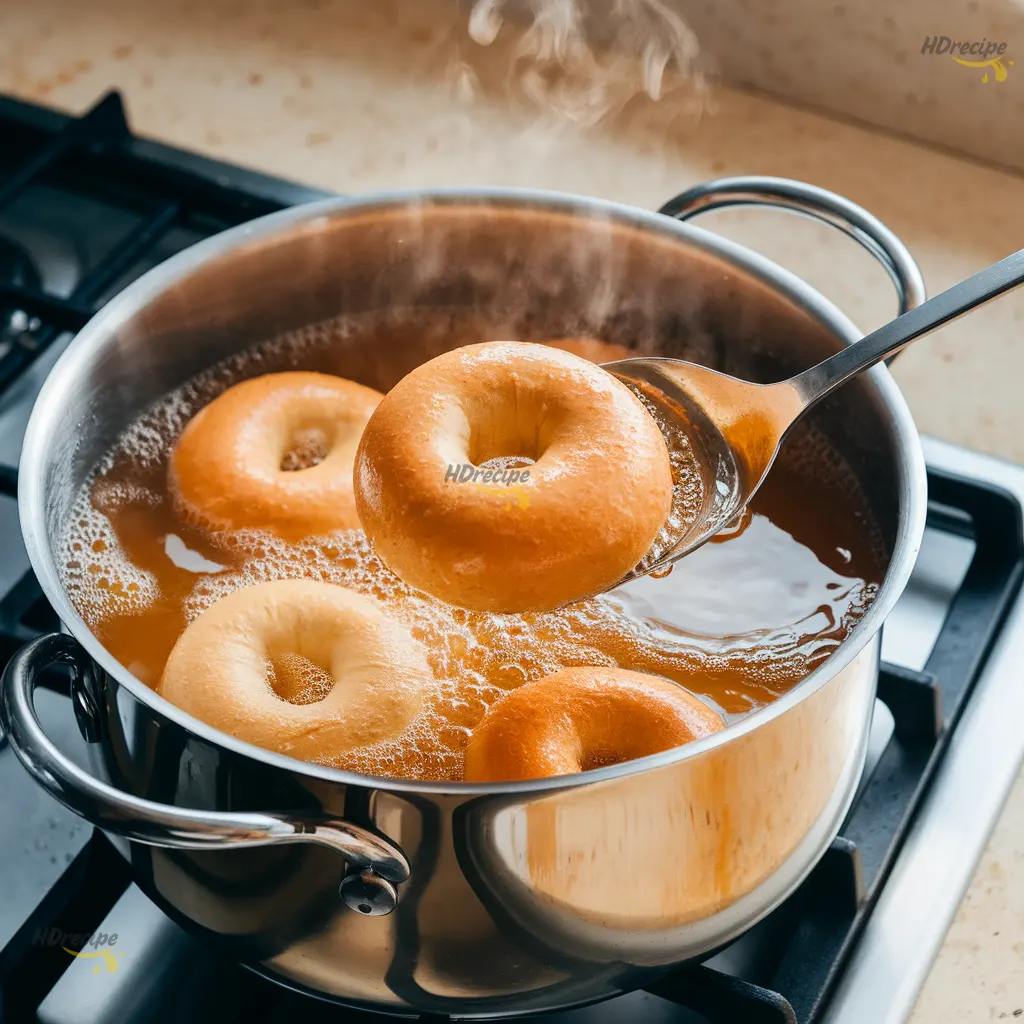
⤷ Bake to perfection.
Return boiled bagels to parchment-lined baking sheets. Sprinkle with desired toppings while still wet from boiling. Bake for 20-25 minutes until golden brown and firm to the touch. Internal temperature should reach 200°F for fully cooked centers.
Small Tweaks, Big Payoff: Bagel Wisdom to Keep Handy
❀ Use a kitchen scale for consistency. Gluten-free flours vary significantly in weight per cup. Weighing ingredients ensures the same results every time and prevents dense, heavy bagels.
❀ Don’t skip the boiling step. This traditional technique isn’t just for show—boiling sets the exterior proteins and creates that signature chewy crust. Bagels baked without boiling will taste more like bread rolls.
❀ Test your water temperature. Too-hot water kills yeast; too-cool water won’t activate it properly. The ideal temperature feels like a comfortable bath—around 110°F if you have a thermometer.
❀ Shape with confidence. Gluten-free dough won’t stretch like wheat dough, so form your bagel shapes decisively. If dough cracks slightly, wet your fingers and smooth the surface.
❀ Freeze for convenience. Cool completely, then freeze in airtight containers for up to 3 months. Toast straight from frozen—no thawing needed.
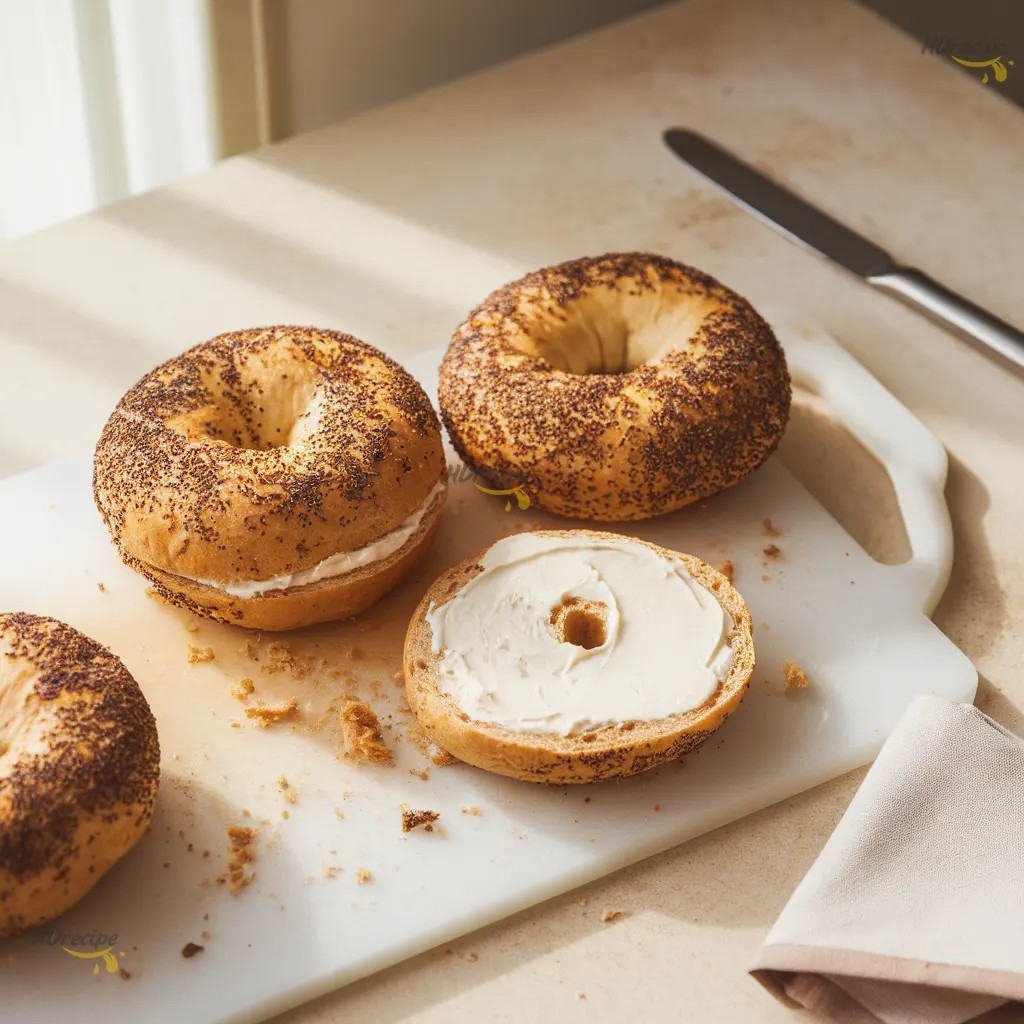
Bagel Questions You’re Probably Asking Right Now
➲ Can I substitute different gluten-free flours?
The three-flour blend creates the best texture, but you can replace brown rice flour with an equal amount of gluten-free all-purpose flour blend. Avoid single-flour substitutions, as each flour serves a specific purpose in the recipe.
➲ Why are my bagels dense and heavy?
Most likely, the yeast wasn’t properly activated or the dough didn’t rise long enough. Ensure your water temperature is correct and give the dough adequate time to double in size. Cold kitchens may need longer rising times.
➲ How do I store leftover bagels?
Store at room temperature for 2 days in an airtight container, or freeze for longer storage. Reheat by toasting or warming in a 350°F oven for 5 minutes to restore crispness.
➲ Can I make these dairy-free?
Yes, this recipe is naturally dairy-free when using olive oil. For richer flavor, substitute the olive oil with melted vegan butter, but the texture will be slightly more tender.
The Takeaway: Gluten-Free Doesn’t Mean Flavor-Free
These gluten free bagels prove that dietary restrictions don’t mean sacrificing the foods you love. The combination of proper flour ratios, traditional boiling technique, and patient rising creates bagels with authentic texture and flavor that satisfy any craving.
You may also like:
❀ Rich & Soft Fudgy Red Velvet Crinkle Cookies (Ready in 30 Min!)
❀ Healthy Cherry Smoothie (3 Ingredients & Ready in 5 Min)
❀ Easy & Creamy Peach Smoothie Recipe (5 Min + No Added Sugar)
❀ Super Moist Vegan Banana Bread Recipe (Ready in 1 Hour!)
Have you tried this bagel recipe? Drop a comment below and share your favorite toppings or flavor twists. Pin this recipe to Pinterest so you can easily find it next time you’re craving homemade bagels, and show off your creations! Nothing makes me happier than seeing these bagels come to life in your kitchen and hearing how they fit into your morning routine.
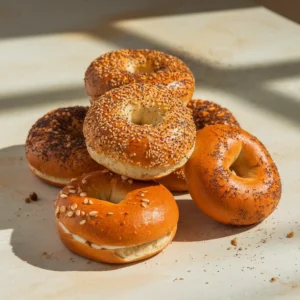
Soft Gluten-Free Bagels
Ingredients
- 2 cups brown rice flour
- 1 cup tapioca starch
- ½ cup potato starch
- 2 tablespoons psyllium husk powder
- 1 tablespoon active dry yeast
- 1 tablespoon sugar
- 2 teaspoons salt
- 1¼ cups warm water 110°F
- 2 tablespoons olive oil
- 8 cups water for boiling
- 2 tablespoons honey or maple syrup
- Optional: sesame seeds poppy seeds, everything seasoning, or coarse salt
Instructions
- Activate yeast in warm water with sugar until foamy.
- Mix all dry ingredients separately, then combine with yeast mixture and olive oil to form sticky dough.
- Let rise 45–60 minutes. Shape into 8 bagels and let rise 30 more minutes.
- Boil each bagel 90 seconds per side in honey water, then bake at 425°F for 20–25 minutes until golden brown.
- Cool slightly before slicing or freezing.
